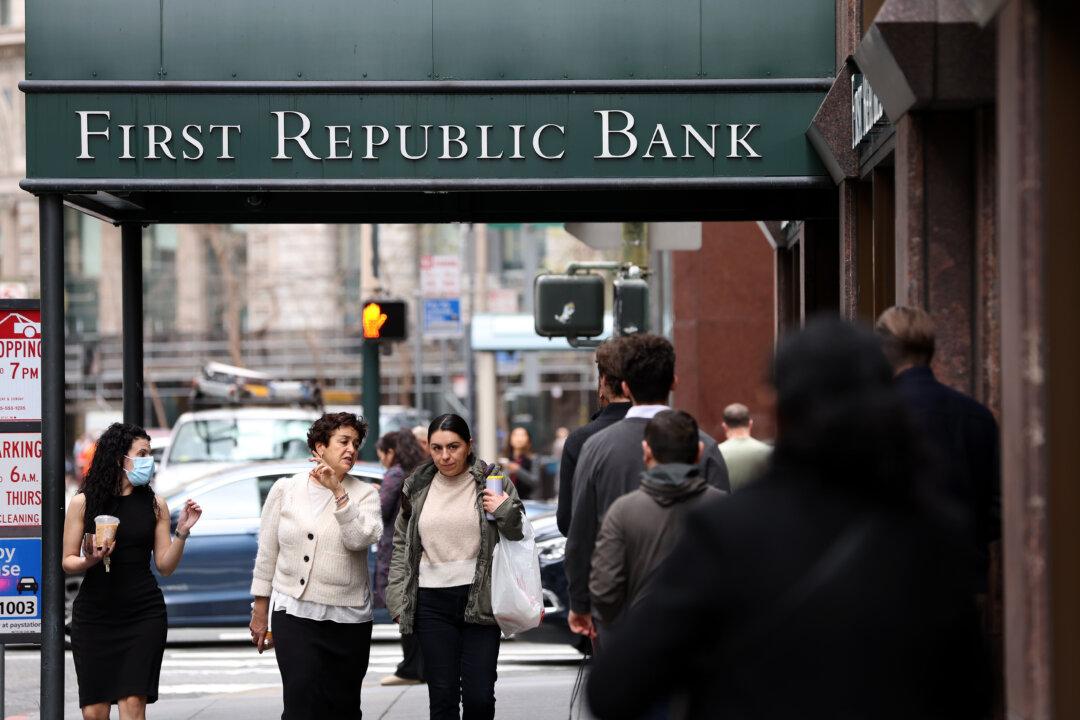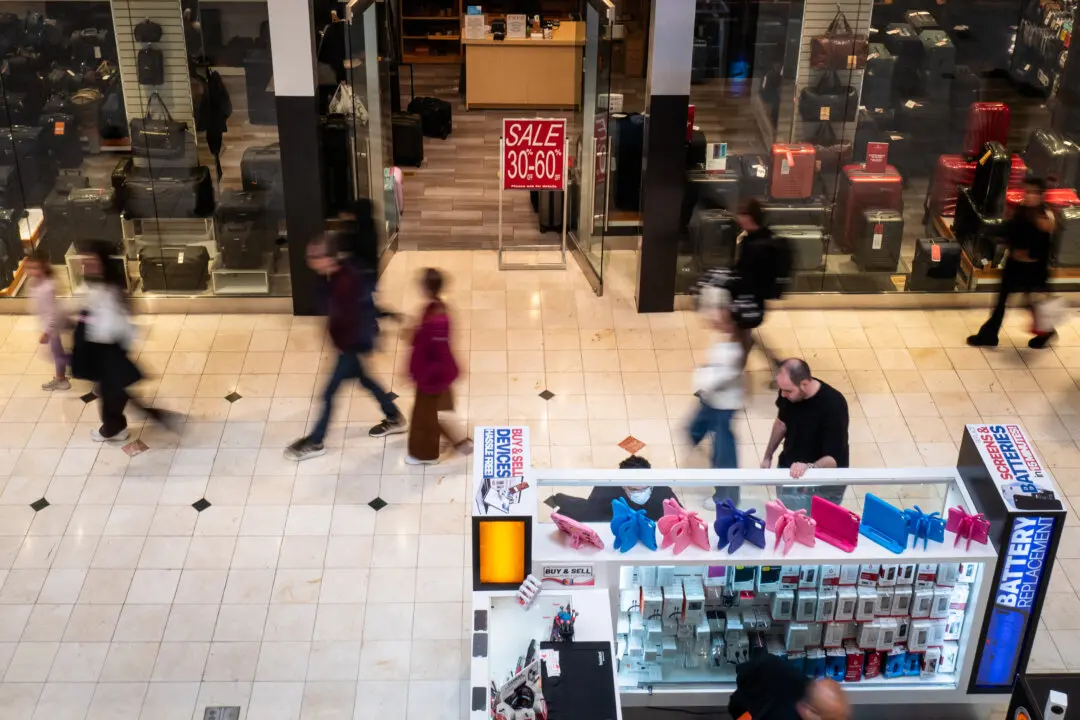First Republic Bank announced “unprecedented deposit outflows” in the quarter ended March 31, with the news sending the company’s stock crashing by over 20 percent.
For the quarter ended March 31, 2023, First Republic deposits have declined by 40.8 percent since Dec. 31, 2022, according to an April 24 press release (pdf) by the bank. Deposits during this period fell from $176.44 billion to $104.47 billion, a decline of $71.97 billion. However, First Republic had received a $30 billion lifeline in deposits from major U.S. banks in March. Accounting for this, the real deposit decline would have been close to $102 billion. Deposits were down 35.5 percent year over year.





